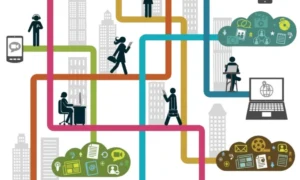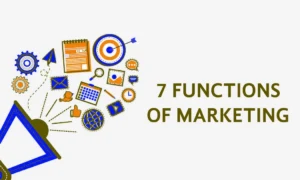Introduction:
In today’s digital era, marked by a relentless pursuit of innovation, nurturing creativity and fostering collaboration within the workplace has emerged as a critical priority for companies striving to maintain a competitive edge. Google, recognized globally as a powerhouse in the tech industry, stands out not only for its revolutionary products and services but also for its distinctive office environments crafted to nurture creativity and encourage collaboration among its workforce. In this piece, we delve into the strategies and components that transform Google offices into vibrant hubs of innovation, shedding light on how they inspire employees to break conventional boundaries and unite towards shared objectives. Additionally, we’ll explore how Google office in India embodies these principles, contributing to the company’s global culture of innovation and collaboration.
The Physical Space:
Google’s office spaces are renowned for their innovative and inspiring designs. Gone are the days of dreary cubicles and sterile environments. Instead, Google offices are characterized by open floor plans, vibrant colors, and whimsical décor. From indoor slides and game rooms to cozy lounges and outdoor green spaces, every corner of a Google office is carefully curated to stimulate creativity and encourage interaction.
Flexible Workspaces:
Flexibility is key to fostering creativity and collaboration, and Google understands this better than most. Employees are not tethered to their desks but are free to choose where and how they work. Whether it’s a quiet corner for focused tasks, a communal table for brainstorming sessions, or a cozy couch for informal meetings, Google offices offer a variety of spaces to suit every work style and preference.
Technology and Tools:
Innovation is at the core of Google’s DNA, and this is reflected in the technology and tools available to employees. State-of-the-art equipment, high-speed internet, and cutting-edge software empower employees to bring their ideas to life quickly and efficiently. Moreover, Google’s collaborative platforms, such as G Suite and Google Workspace, facilitate seamless communication and file sharing, enabling teams to collaborate in real-time regardless of their physical location.
Embracing Diversity and Inclusion:
Google recognizes that diversity fuels creativity and innovation. Therefore, the company places a strong emphasis on creating an inclusive environment where employees from diverse backgrounds feel valued and empowered to contribute their unique perspectives. Initiatives such as employee resource groups, diversity training programs, and inclusive hiring practices help foster a sense of belonging and encourage collaboration across teams.
Nurturing a Culture of Creativity:
At Google, creativity is not just encouraged; it’s celebrated. From hackathons and innovation challenges to 20% time projects, employees are given the freedom to explore their passions and pursue new ideas outside of their day-to-day responsibilities. This culture of experimentation and risk-taking fosters a mindset of continuous learning and drives innovation across the organization.
Prioritizing Work-Life Balance:
Creativity flourishes when employees are happy, healthy, and well-rested. Google understands the importance of work-life balance and offers a range of perks and benefits to support its employees’ well-being. From onsite wellness programs and fitness centers to flexible schedules and generous parental leave policies, Google’s commitment to employee wellness enables them to bring their best selves to work each day.
Community and Connection:
Google offices are more than just places to work; they’re vibrant communities where employees come together to share ideas, collaborate on projects, and form lasting friendships. Whether it’s a company-wide town hall meeting, a team-building retreat, or a casual coffee break in the office kitchen, Google fosters a sense of belonging and connection that fuels collaboration and innovation.
Conclusion:
In a world where innovation is the currency of success, fostering creativity and collaboration within the workplace is no longer optional—it’s essential. Google’s office culture serves as a shining example of how companies can create environments that inspire employees to think creatively, work collaboratively, and push the boundaries of what’s possible. By prioritizing flexible workspaces, embracing diversity and inclusion, nurturing a culture of creativity, and prioritizing employee well-being, Google has cultivated a workplace where innovation thrives and where the next big idea is always just around the corner. As other companies strive to emulate Google’s success, one thing is clear: the future belongs to those who prioritize creativity and collaboration in the workplace.





























